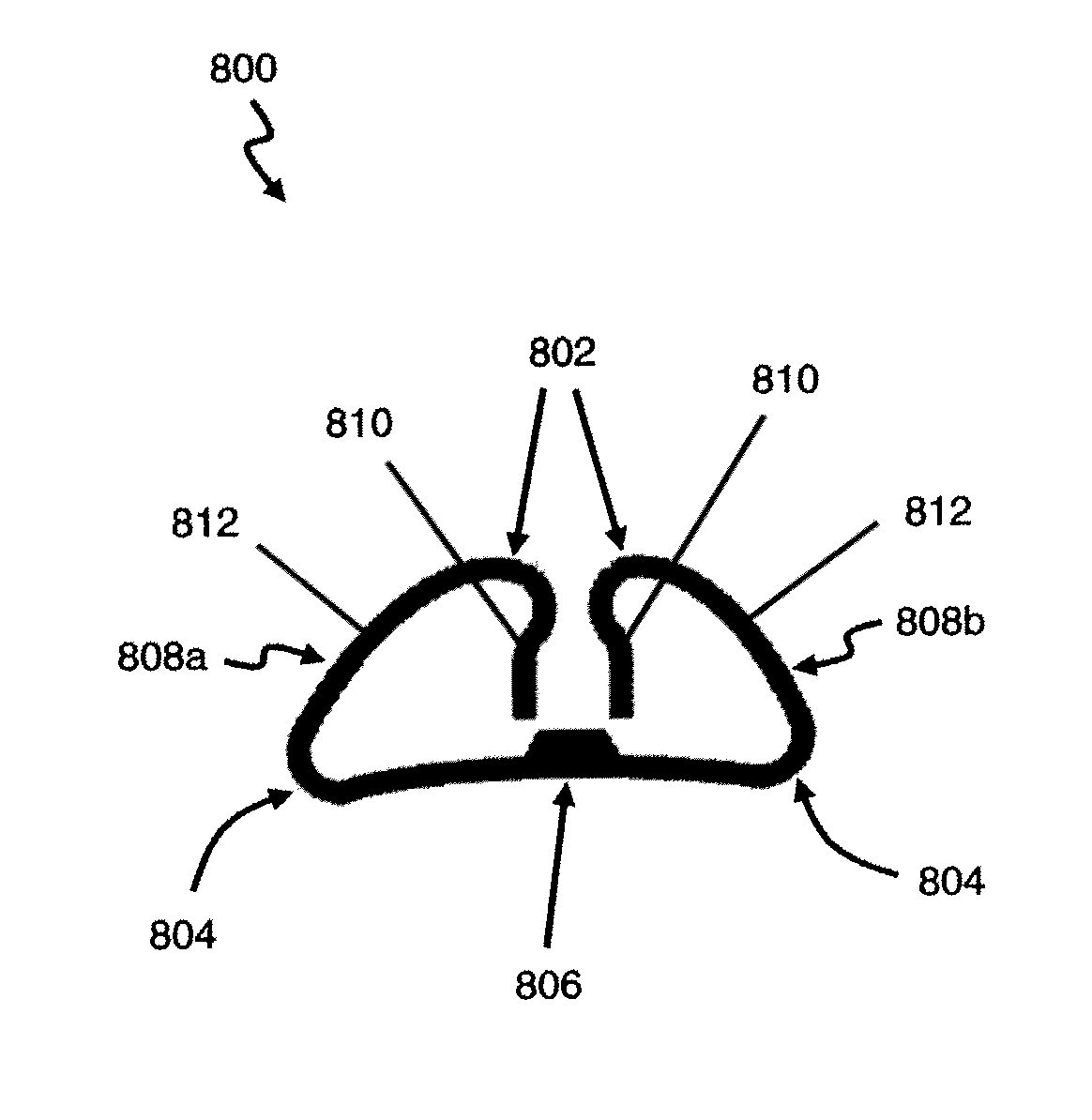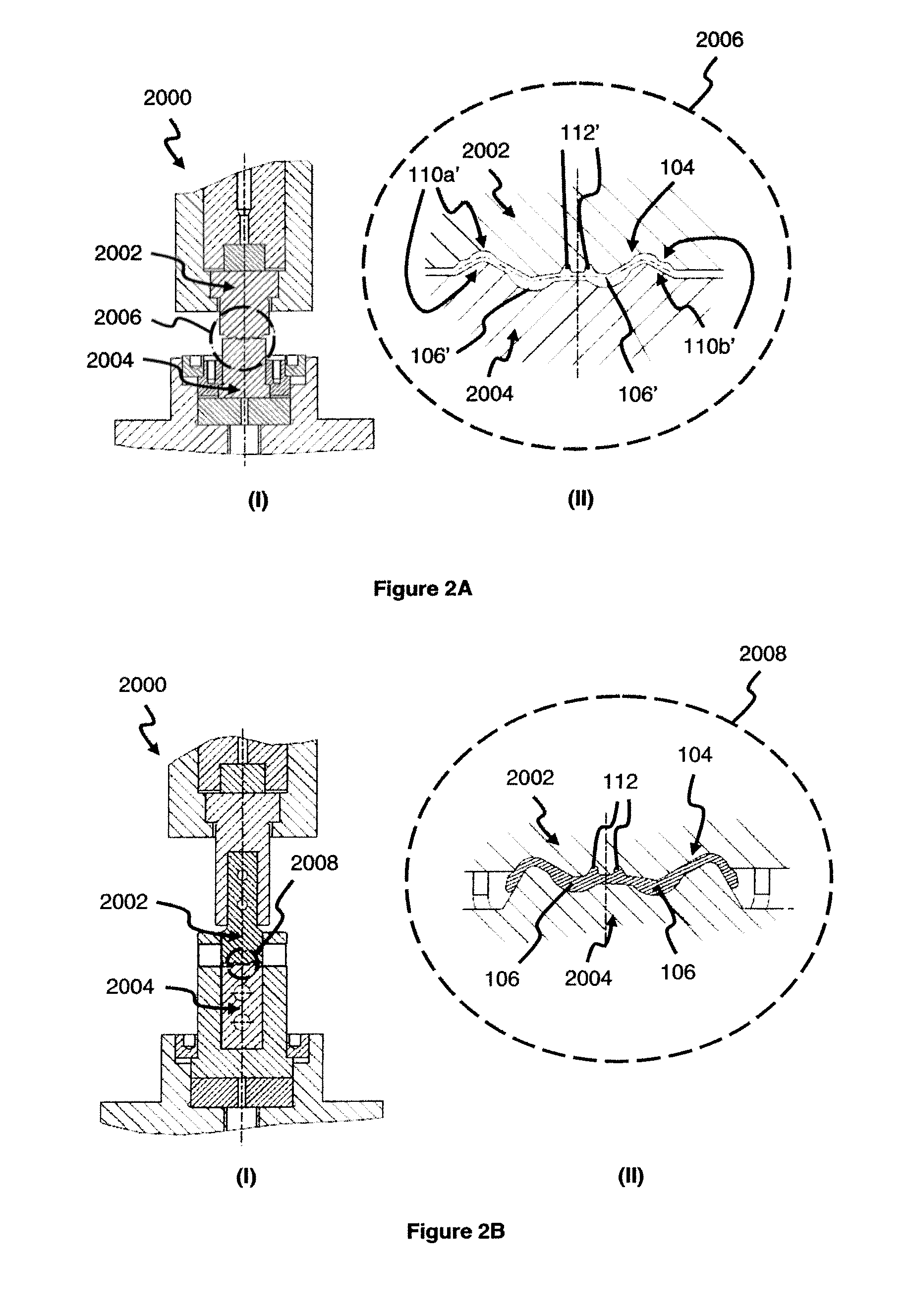Method and apparatus for forming orthodontic brackets
- Summary
- Abstract
- Description
- Claims
- Application Information
AI Technical Summary
Benefits of technology
Problems solved by technology
Method used
Image
Examples
Embodiment Construction
[0025]FIG. 1 shows a method 100, depicting Steps (A) to (F), for forming an orthodontic bracket 102 (hereinafter orthodontic bracket) from a length of material such as a workpiece 104 according to a first embodiment of the method. In this exemplary embodiment, the orthodontic bracket 102 is of the self-ligating type and the workpiece 104 is composed of beta (β) titanium alloy, Ti59-Nb36-so Ta2-Zr2-O which is nickel-free and characterised by low Young's modulus as well as high tensile strength. In particular, Ti59-Nb36-Ta2-Zr2-O displays a Young's modulus that ranges between 40 to 60 GigaPascal (GPa), which is significantly lower than those of conventional steels, which are approximately in the region of 200 GPa.
[0026]For ease of describing the embodiment, the method 100 will be described together with FIGS. 2A to 2H, which depict various stages of processing the workpiece 104 based on the method 100 of FIG. 1 to form the orthodontic bracket 102. In the drawings and description, like...
PUM
| Property | Measurement | Unit |
|---|---|---|
| Length | aaaaa | aaaaa |
| Thickness | aaaaa | aaaaa |
| Radius | aaaaa | aaaaa |
Abstract
Description
Claims
Application Information
 Login to View More
Login to View More - R&D
- Intellectual Property
- Life Sciences
- Materials
- Tech Scout
- Unparalleled Data Quality
- Higher Quality Content
- 60% Fewer Hallucinations
Browse by: Latest US Patents, China's latest patents, Technical Efficacy Thesaurus, Application Domain, Technology Topic, Popular Technical Reports.
© 2025 PatSnap. All rights reserved.Legal|Privacy policy|Modern Slavery Act Transparency Statement|Sitemap|About US| Contact US: help@patsnap.com



